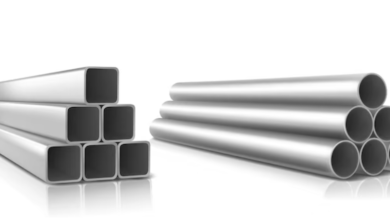Why Body Donation to Science is a Sustainable Alternative to Traditional Funerals

Traditional funeral practices carry hidden environmental costs that many families never consider. Burial and cremation methods consume vast resources while generating significant pollution. Modern alternatives like body donation offer families a meaningful way to honor their loved ones. This selfless choice creates lasting value for medical research and education.
The growing interest in donating your body to science reflects changing attitudes about death and environmental responsibility. Medical schools and research institutions depend on these generous gifts to train future doctors and advance treatments. Families discover that this decision provides comfort during difficult times. The process eliminates many stressful funeral planning decisions while serving a greater purpose.
Environmental Impact of Traditional Burial Methods
Cemetery burials create substantial environmental challenges that extend far beyond the immediate funeral service. Each traditional burial requires hardwood caskets, concrete vaults, and chemical preservation treatments that contaminate surrounding soil. The casket manufacturing industry consumes millions of board feet of hardwood annually, contributing to deforestation. Metal caskets require energy-intensive mining and manufacturing processes that generate considerable carbon emissions.
Chemical Contamination Concerns: Embalming fluids contain formaldehyde and other toxic chemicals that leach into groundwater systems over time. These substances pose risks to local ecosystems and drinking water supplies in communities near cemeteries. The preservation process itself requires additional resources including specialized facilities and trained personnel who handle hazardous materials daily.
Modern cemeteries occupy increasingly valuable land that could serve conservation or agricultural purposes instead. Groundskeeping operations rely on fertilizers, pesticides, and frequent irrigation that strain local water resources. The ongoing maintenance requirements create perpetual environmental impacts long after initial burial ceremonies conclude.
The Hidden Costs of Cremation
Cremation appears environmentally friendly compared to traditional burial, but the process generates significant atmospheric pollution and energy consumption. High-temperature furnaces burn fossil fuels for several hours per body, releasing carbon dioxide and other greenhouse gases. The cremation process requires temperatures exceeding 1,400 degrees Fahrenheit, consuming energy equivalent to a 500-mile car journey for each procedure.
Mercury Emissions and Air Quality: Dental amalgam fillings release mercury vapor during cremation, contributing to atmospheric mercury pollution that affects global ecosystems. Air quality monitoring stations near crematoriums detect elevated levels of particulate matter and other pollutants. These emissions accumulate in surrounding communities, particularly affecting sensitive populations like children and elderly residents.
The cremation industry’s energy demands continue growing as more families choose this option over burial. Peak demand periods strain electrical grids and increase reliance on fossil fuel power generation. Equipment manufacturing and facility construction add additional environmental costs that most families never consider when making end-of-life decisions.
See also: How Nutraceuticals Are Reshaping Preventive Healthcare in India
How Body Donation Reduces Environmental Impact
Body donation eliminates the resource consumption and pollution associated with traditional funeral methods entirely. Medical schools handle the preservation process using minimal chemicals compared to funeral home embalming procedures. The educational value created from each donation serves hundreds of medical students throughout their careers. Research applications can lead to treatments that save countless lives.
Resource Conservation Benefits: Donated bodies require no caskets, vaults, or cemetery land usage that traditional burials demand. The transportation process generates minimal emissions compared to funeral processions and cemetery operations. Medical facilities use existing infrastructure rather than requiring dedicated funeral industry resources and facilities.
Universities and medical schools coordinate respectful handling procedures that honor the donor’s contribution to science. The process typically includes memorial services that celebrate the educational impact rather than focusing on loss. Families often report greater satisfaction knowing their loved one continues helping others through medical education and research.
The Scientific Value of Body Donation
Medical education relies heavily on anatomical study using donated bodies to train competent healthcare professionals. Students gain hands-on experience that textbooks and digital models cannot provide effectively. Surgical training programs use donated tissues to develop minimally invasive techniques that benefit future patients. Research applications include studying disease processes and testing new treatment approaches.
Long-Term Educational Impact: Each donated body contributes to training dozens of medical professionals throughout their educational journey. Physical therapy, nursing, and other healthcare programs benefit from access to anatomical specimens for learning purposes. The knowledge gained influences medical practice for decades as these professionals treat patients throughout their careers.
Specialized research projects often require donated tissues to understand rare diseases and develop targeted therapies. Pharmaceutical companies rely on donated specimens to test drug safety and effectiveness before clinical trials begin. The scientific contributions extend far beyond initial educational uses to benefit medical advancement globally.
Making the Decision Process Easier
Body donation programs provide clear guidelines and support throughout the decision-making process for interested families. Most programs handle transportation, preservation, and documentation without additional costs to grieving families. The paperwork requirements are typically simpler than traditional funeral arrangements, reducing stress during difficult times. Educational institutions provide regular updates about research and educational applications when families request information.
Family Support and Communication: Donor programs maintain respectful communication with families throughout the process, providing updates and answering questions as needed. Memorial services can be arranged independently, allowing families to celebrate their loved one’s life and contribution to science. Many programs return cremated remains to families after educational and research purposes are completed, typically within two to three years.
Planning ahead allows families to discuss preferences and complete necessary documentation before emotional decisions become urgent. Most donor programs provide educational materials that explain the process clearly and address common concerns families express during initial conversations about this option.
Conclusion
Body donation represents a meaningful way to reduce environmental impact while contributing to medical advancement and education. This choice eliminates the resource consumption and pollution associated with traditional funeral methods entirely. Families discover that knowing their loved one continues helping others provides comfort during the grieving process. The decision supports future healthcare professionals and medical research that benefits society broadly. Consider exploring body donation programs in your area to learn more about this sustainable alternative that creates lasting positive impact beyond traditional funeral practices.




